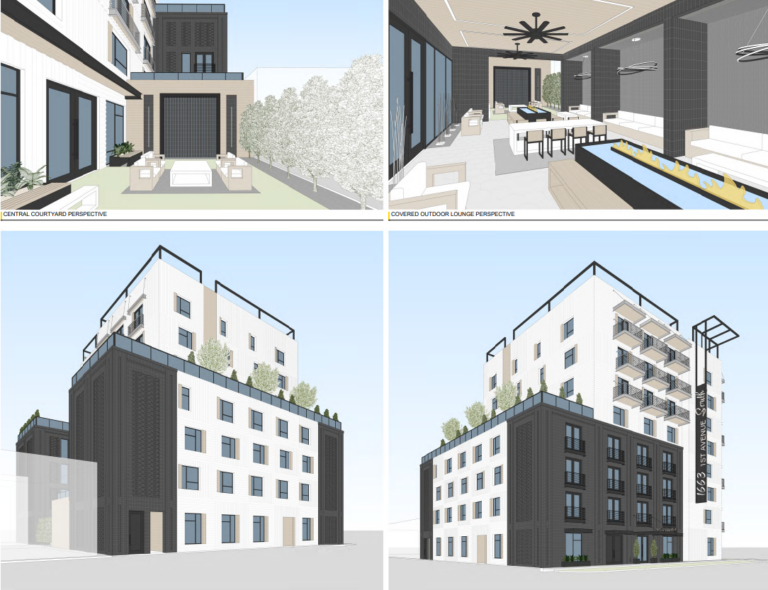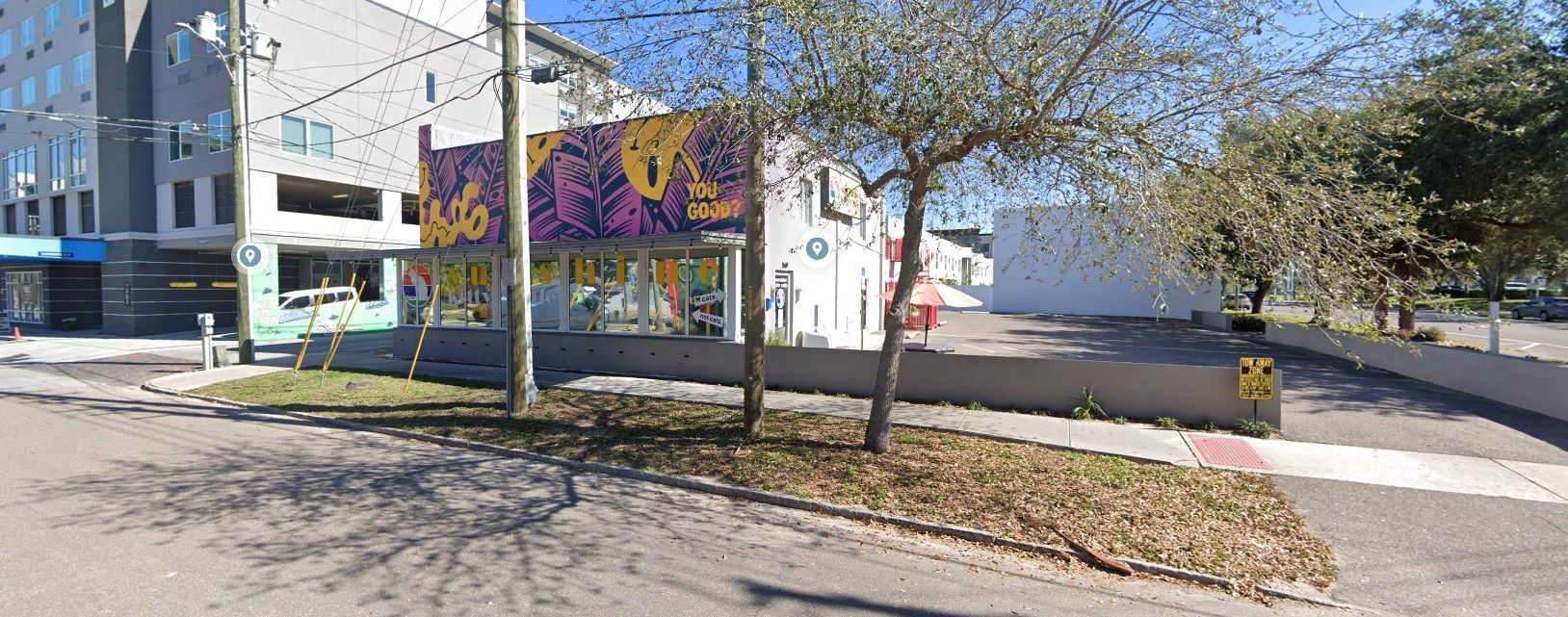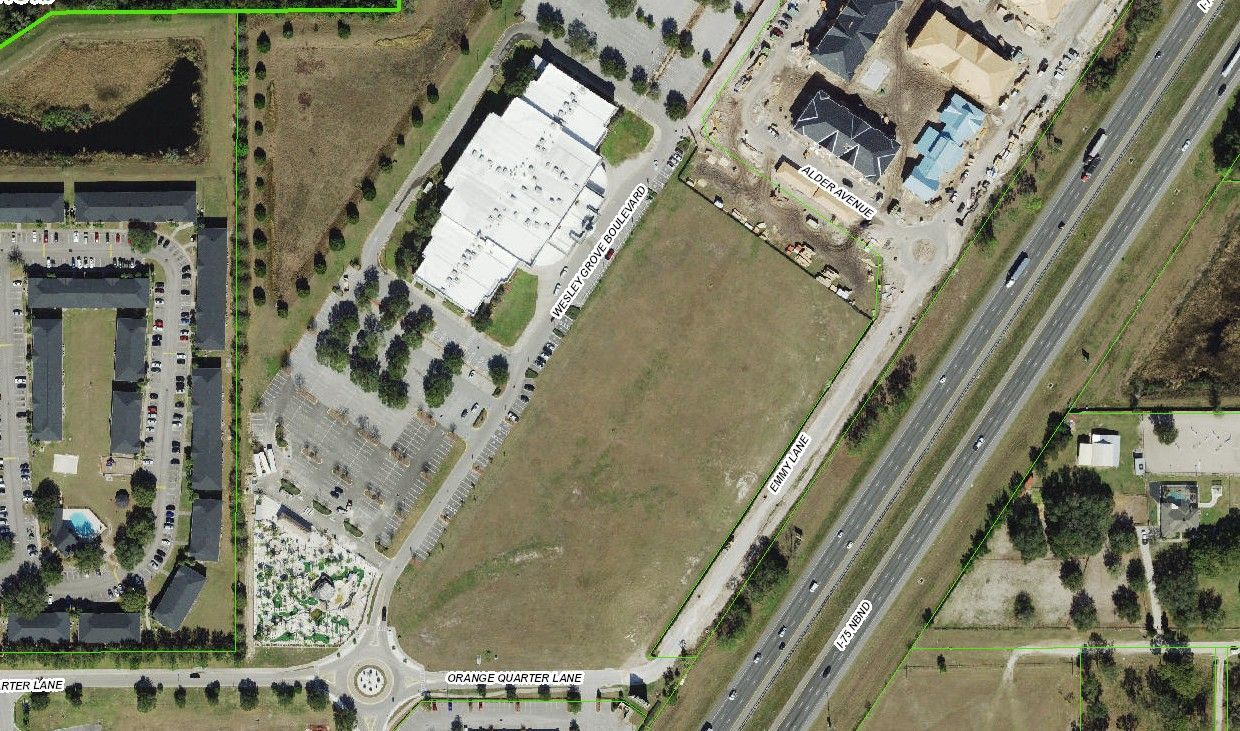Car-Free Apartment Project in Downtown St. Petersburg receives DRC approval

Back in June, two local developers revealed plans to build an eight-story apartment building near Tropicana Field. Unlike other projects in Downtown St. Petersburg though, the complex does not have any parking. The proposal is for an eight story 97-unit structure at 1663 1st Ave S., where Sunshine Kitty Café and the Dolman Law Group office currently resides – adjacent to the Tru by Hilton hotel.
The developers – Craig Bazarsky of BendinRoad Development LLC and Christopher Bicho of Landings Real Estate Group, did not include any street-level parking or an onsite parking garage, citing the walkability of the area. Mass transit options are available in the area and the developers feel a car-free project will contribute to the walkability of the Central Avenue corridor. The SunRunner system runs near the site and makes the area a prime location for car-free residents according to the developers.
Parking spaces for the project are not required legally since the proposal is for one-bedroom and studio units that are less than 750 square feet. 101 bike storage units, however, will be placed on site. The Development Review Committee ultimately decided to pass the site plan for the project - but not without voicing concerns.
Earlier this year, The Metro Complex, a similar concept, traded hands and converted into the Mint House – a hotel with short term rentals that has an apartment style. Commissioners feared a similar transaction could occur if approved, but developers assured this would not be the case. The project is estimated to cost $25 million.
For the developers, this is not the first car-free project they have done. Currently, they are working on a seven-story complex in the Water Street district in Tampa. That project will have 104 units that range between 400 to 450 square feet and will only have seven parking spaces. In St. Pete, the team will partner with Circuit – an electric ride share service that will exclusively provide rides for residents within a two-mile radius. And while the developers are not going for a qualification in affordable housing, they are pitching the project to be part of the solution for more affordable living solutions in the area. Since the units are smaller, rental rates will not be as large.
The units will be furnished and equipped with automated furniture systems from Ori, which will allow residents to lift beds to the ceiling to create expandable living space.
The DRC approved the site plan but does say if the use of the complex is to change the developers must return to the DRC for a public hearing and approval.


Google Street View scene of the Sunshine Kitty Cafe, and an aerial taken from the Pinellas County Property Appraiser shows where the site is located.

Thank you for your interest. If you are in need of Appraisal & Valuation services in the St. Petersburg area, contact:
Mike Cliggitt, MAI, MRICS, CCIM
813.405.1705 - Direct Line
Source: St. Pete Catalyst
SHARE CONTENT





